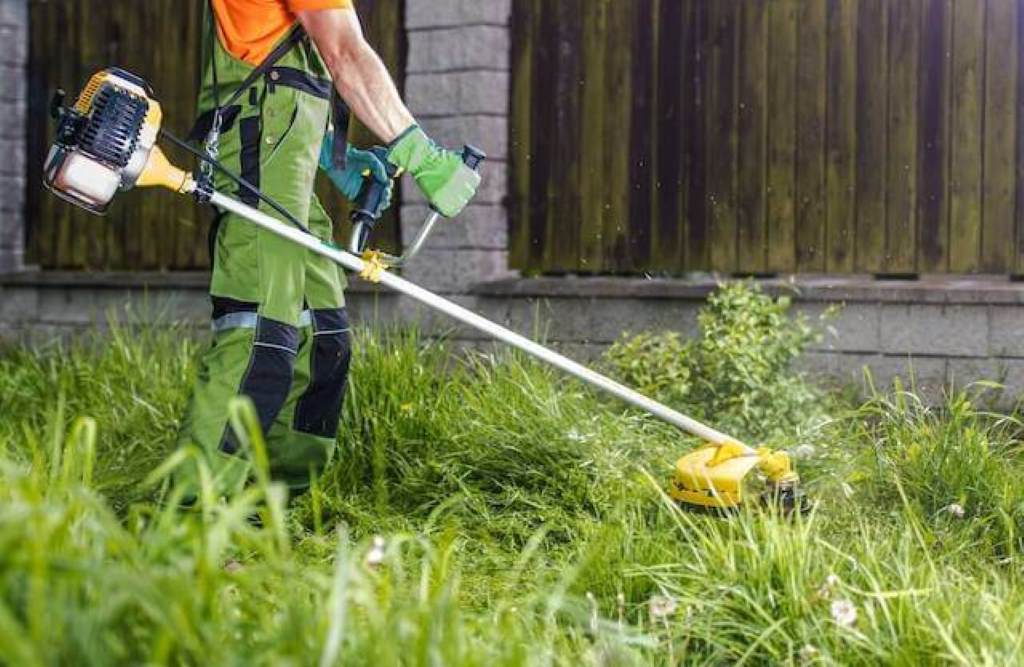Imagine the satisfaction of firing up your mower on a sunny morning. You transform wild yards into crisp, green spaces. Clients wave from windows, thrilled with the results. That scent of fresh-cut grass fills the air as you pocket your earnings. Starting a grass cutting business lets you turn outdoor passion into real income. You offer services like mowing, edging, trimming, and basic yard cleanup. Homeowners save time. You build flexibility and freedom.
The lawn care industry thrives today. It generated $115 billion in revenue in 2023, reports the National Association of Landscape Professionals (NALP). Grand View Research forecasts 4.5% annual growth through 2030. Why? Remote work booms. Families prioritize curb appeal. Urban sprawl adds more properties needing care. The U.S. Bureau of Labor Statistics notes over 1 million landscaping jobs, with demand rising 5% faster than average. You enter a stable market. Busy pros outsource turf maintenance. This guide delivers every step. You gain practical tools to launch strong. Cut through confusion. Build your mowing empire.
Why Launch a Grass Cutting Business Now?
Self-employment calls to many. A grass cutting business stands out for ease. Low barriers let you start solo. Scale as clients flock. Suburbs and cities hold endless yards. Weather varies, but core mowing runs spring to fall. Add fall leaf removal or spring prep for year-round work.
Assess your fit. Love physical tasks? Tolerate early starts and elements? Enjoy problem-solving overgrown patches? Success stories inspire. One entrepreneur shared on UpFlip how he grew from a single mower to a $10 million operation. Focus on reliability wins.
Data supports the move. IBISWorld counts 600,000-plus landscaping firms in the US. Solo operators average $50,000 to $100,000 yearly income. You set hours. Foster loyalty. Profits compound with referrals. Post-pandemic, homeowners invest more in homes. NALP surveys show 70% of clients seek recurring services. Tap that. Diversify into lawn aeration or mulching. Steady demand fuels growth.
Consider lifestyle perks. Work outdoors. Stay active. Build community ties. Challenges exist, like competition, but smart strategies overcome them. Research local gaps. Offer what others skip, like eco-friendly cuts. The time feels right. Act now for seasonal advantages. Discover Sureshot Quick Business Plan for a Food Truck.
Step 1: Plan Your Grass Cutting Venture
Solid planning sets winners apart. Draft a business plan. Outline vision, goals, and services. Target middle-class neighborhoods with large lots. Services include weekly grass trimming, bi-weekly edging, and seasonal cleanups.
Scout your market. Drive target areas. Spot competitor schedules. Note neglected yards. Use Google Earth for lot sizes. Survey potential clients informally. Ask about pain points. Set goals: 15 clients month one, 50 by quarter three.
Pick a niche. Residential grass cutting suits beginners. Commercial properties demand more gear but pay higher. Start residential. Expand to apartments or parks. Define unique value: Punctual service or pet-safe methods.
Crunch numbers. Estimate startup costs at $5,000 to $10,000. Project revenue: $40 per average yard, 20 yards weekly equals $3,200 monthly. Factor expenses: Fuel, maintenance, marketing. Aim for break-even in 3-6 months.
Build contingencies. Rain plans? Offer gutter cleaning. Economic dips? Target budget clients. Use free templates from SCORE.org. Update quarterly. Track in apps like LivePlan. This blueprint guides decisions. Stay adaptable.
Include marketing outline. Budget 10% of revenue for ads. List suppliers for equipment. Detail operations: Routes, scheduling. Planning turns dreams into reality.
Step 2: Handle Legal Basics for Your Lawn Mowing Service
Legal compliance builds trust. Start with business registration. Most states require a general license. Visit city hall or online portals. Choose a name like “Green Cut Pros.” Register DBA if needed.
Secure an EIN from IRS.gov. It’s free, takes minutes. Handles taxes smoothly.
Check contractor licenses. Basic mowing often skips them. But states like California mandate C-27 for landscape work. Texas allows unlicensed mowing under $500 jobs. Use FieldRoutes’ state-by-state guide. Apply early; processing takes weeks.
Pesticide use? Get commercial applicator certification. State agriculture departments test on safety. Renew every few years.
Insurance shields you. General liability covers property damage or injuries. Expect $500-1,500 yearly. Add commercial auto for trucks. Workers’ comp mandatory with employees. Shop via Insureon. Document everything.
Choose structure. Sole proprietorship simplest for solos. LLC protects assets from lawsuits. File articles with secretary of state. Use LegalZoom for ease.
Local rules vary. HOAs may need permits. Zoning checks for home-based ops. Bond if required for contracts. Consult free SBA advisors. Stay compliant. Fines hurt startups.
Taxes matter. Quarterly estimates via IRS Form 1040-ES. Track mileage deductions. Software like QuickBooks simplifies.

Step 3: Gear Up with Essential Lawn Care Equipment
Reliable tools make jobs efficient. Begin with commercial-grade basics. Push mowers from Honda or Exmark cut fast, last years. Add gas-powered string trimmer for edges. Backpack blower clears debris quick.
Budget wisely. Core setup: $5,000-8,000 per Lawn Love estimates. Use personal truck first. Trailer expands capacity later.
Essential starter list:
- Commercial mower: 21-30 inch deck, self-propelled for hills.
- String trimmer and edger: Echo or Stihl brands for durability.
- Leaf blower: 200+ MPH for clippings.
- Safety equipment: Steel-toe boots, chaps, goggles, hearing protection.
- Hand tools: Pruners, rakes, wheelbarrow for waste.
- Transport: Hitch trailer, straps for secure loads.
Maintenance key. Sharpen blades bi-weekly. Oil engines. Clean air filters. This extends life, cuts repair costs.
Fuel smart. Ethanol-free gas prevents gumming. Store in approved cans. Track consumption per job.
Test before buy. Rent from Home Depot. Upgrade path: Zero-turn mowers for large yards save time. Electric options grow popular for quiet, green appeal.
Accessories boost: Weed whacker attachments, mulching kits. Source from Tractor Supply. Quality pays off in speed and client wow.
Step 4: Set Smart Prices for Your Turf Maintenance Services
Fair pricing attracts and retains. Research competitors via quotes or sites like Angi. National average: $30-60 per mow. Adjust for yard size, grass type, obstacles.
Methods:
- Flat rate: $40 small yard, $60 medium.
- Per square foot: $0.01-0.03 for big lots.
- Packages: Weekly 10% discount, monthly prepay.
Factor costs: Labor 1-2 hours, gas $5, equipment wear. Target 40-60% margins. Use calculators from ServiceTitan.
Seasonal adjusts: Higher spring rates. Offer bundles: Mow + trim + blow.
Payments: Square or Stripe for cards. Net 30 invoices for regulars. Deposits for new.
Test and tweak. Survey clients. Raise 5-10% yearly. Value-adds like fertilizer upsell revenue.
Contracts lock loyalty. Outline frequency, extras. Build trust with transparency.
Step 5: Find Clients with Easy Marketing Tactics
Marketing fills schedules. Claim Google Business Profile. Optimize with photos, services, reviews. Rank for “lawn mowing near me.”
Social proof: Facebook pages with before-afters. Instagram Reels of quick jobs. Target local groups.
Offline: Door hangers in neighborhoods. Yard signs at jobs. First-mow free trials.
Network: Join chambers, realtor partnerships. HOA pitches for bulk.
Digital: SEO site via WordPress. Blog tips like “Best Grass Types.” Google Ads geo-target.
Email: Collect via sign-ups. Send seasonal offers.
Track ROI. UTM links, lead sources. Reviews on Google, Yelp drive 80% decisions per BrightLocal.
Video content: YouTube tutorials. TikTok hacks grab youth.
Budget: $200 monthly ads yield 10 leads.
Step 6: Run Smooth Daily Operations
Efficiency scales you. Apps like Jobber schedule, route, invoice.
Daily routine:
- Morning load: Check gear, fuel.
- Weather app alerts. Reschedule smart.
- Arrive early. Uniforms build pro image.
- Mow stripes neat. Edge beds. Blow paths.
- Cleanup: Bag waste. Walk-through.
Safety: Hydrate, sunscreen. Mark hazards. Train on equipment.
Metrics: Jobs/day, time/yard. Optimize routes via Google Maps.
Inventory: Stock blades, line. Weekly audits.
Customer touch: Post-job texts. Upsell feedback.
Scale: Subcontract overflow. Automate reminders.
Step 7: Hire and Train for Growth in Yard Care
Solo caps at 20-30 yards. Hire at full book. Post Craigslist, Indeed. Seek drivers license, reliability.
Hiring steps:
- Screen resumes. Tool experience key.
- Interviews: Scenario questions.
- Background checks.
Training: Shadow days. Safety certs. Quality checklists.
Pay: $15-25/hour + bonuses. Vehicles provided.
Culture: Team meetings. Incentives. Clear policies.
Legal: I-9 forms, contracts. Scale routes.
Challenges and Fixes in Starting a Mowing Company
Weather disrupts. Solution: Indoor services, buffers.
Competition: Differentiate with guarantees, tech.
Physical toll: Rotate tasks, ergonomics.
Cash flow: Save 20%, diversify.
Clients: Contracts, vet references.
Forums like LawnSite share fixes.
Real Wins: Grass Cutting Success Stories
Rob Palmer’s Lawn Squad: $250K year one to $10M. Service obsession.
Trevor Kokenge: Bootstrapped to 6-figures, team of two.
Robby Wallace: $5K start to $500K via hires.
Sean Tunney: Immigrant to referrals empire.
Lessons: Consistency, adaptation.
Boost with Trends in Lawn Services
Eco-trends: Native plants, electric mowers.
Tech: GPS tracking, drone surveys.
Subscriptions: Year-round plans.
Apps: GreenPal for leads.
NALP: Sustainability drives 60% client choice.
Conclusion
You hold the tools: Plan, legal, gear, prices, marketing, ops, growth. Launch your grass cutting business. Register now. Buy that mower. Land clients. Build profits. Your green future starts today.
FAQs
What Equipment Do I Need to Start a Grass Cutting Business?
Commercial mower, trimmer, blower, safety gear. Start $5K. Rent to test.
How Much Can I Earn from a Lawn Mowing Service?
$50K-100K solo. Teams scale higher. Margins 40-60%.
Do I Need a License for Turf Maintenance?
Business license yes. Contractor varies by state. Pesticides need cert.
How Do I Market My Yard Care Business?
Google profile, social media, flyers, networks. Focus reviews.
Can I Run a Grass Trimming Business Part-Time?
Yes. Weekends start. Expand as demand grows.





